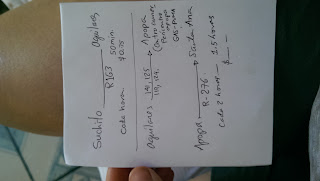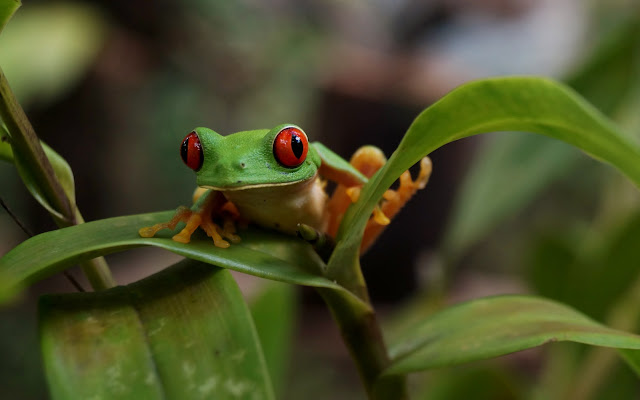Santa Ana, the Ruta de las Flores and Playa el Zonte, El Salvador
 |
| Easy instructions to reach Santa Ana. Unfortunately we didn't find R-276 so had to take 3+ more buses! |
One of the reasons for stopping in Santa Ana on our way to the Ruta was to stay in the hostel voted best in El Salvador for the last 5 years. This hostel has everything required by a traveller: single beds with personal fan, box to put smelly shoes and socks in, power shower, fully equipped kitchen, swimming pool and more.
The next day we visited the Santa Ana Volcano with some other people from the hostel. After purchasing some pupusas for breakfast and bananas for lunch, we hopped on a bus to the volcano full of other tourists.
Although the walk up the volcano is simple, the volcano is on private land so we had to join a tour. Unfortunately, we picked a day when our group was around 50 people, partially made up of around 30 young Mormons. Although some were friendly, the rest were keen to race to the top of the volcano while shouting at each other.
The way of paying for the trip is somewhat complicated as there are several different organisations that are paid separately. Firstly, you must pay $3 at a hut for entrance to the park, next you have to give a “donation” of $1 for the volunteer guides, then at a hut around a quarter of the way up to the volcano you have to pay another $6. This works out to a total of $10.
 |
| Tropidodipsas fischeri- harmless snail eating snake |
The ascent was fairly easy; the path zigzags and there are no real steep inclines, so we were able to reach the top in around an hour and a half. At the top, the path flattens out and there is a huge crater which contains a lake. This lake is definitely not suitable for swimming! It is a sulphur lake and you can still see sulphur steaming out of vents along with a strong eggy smell. Apparently, the guides do not rescue people who fall in!
 |
| The crater and sulphur lake of Volcán Santa Ana with Volcán de Izalco to the right |
 |
| Hitching back to Santa Ana in a truck (this was after most of the locals got off) |
The next day we headed off to the Ruta de las Flores, a string of pretty mountain villages. We planned to stay in Apaneca, a small town in the middle and visit Ataco the next day. We arrived in Apaneca after a couple of easy bus journeys and promptly found our hotel for the next couple of nights- Hostal Il Piemonte.
 |
| Traditional weaving in Ataco |
The next day we headed off to Ataco and explored the town, viewpoint and craft shops. We settled down for a coffee in a shop/workshop and watched some men weaving. This was different from Guatemala, where only the women weave. We were shortly joined by a couple of gentlemen who we had met at the previous hostel and also on the bus the previous day and enjoyed a chat about where we had been and where we were planning to go.
 |
| Part of Massimo's huge collection of models |
While eating dinner that evening, Massimo the hotel owner arrived and offered to take us to his toy museum. He has a huge collection of models ranging from Star Wars, Ninja Turtles and Spiderman to a collection of erasers. Although originally all in his house, Massimo has moved a large part of his collection to a café called 1980.
The next day we took the bus to Juayua (pronounced why-oo-ah) and arrived at our hostel. Afterlunch we went on a tour to Los Chorros de Calera: a set of manmade waterfalls near a hydroelectric plant in a forested valley. Although manmade, the waterfalls are undeniably beautiful with water falling down the cliffs into large pools perfect for swimming.
 |
| Los Chorros de Calera |
Our next destination was the Costa del Bálsamo and the surf village of El Zonte. We arrived in the evening and checked into our hostal (Carnegue Hostal) and promptly jumped in the sea for a swim, which was apparently 28 degrees. We ended up with a double room with private bathroom and a terrace for $10 each per night- the same price as a dorm room. We also found that they run surf lessons, so Greg promptly booked a session for the next morning.
The next day we woke up to find that mice had nibbled a lot of our food. Luckily not all was lost and after breakfast Greg was whisked off by a local surf instructor.
Continued by Greg…
The waves which the instructor assured me were tiny still felt very big and intimidating at around 4-5 foot and clean. The sets of waves were very regular, and you had to watch out you weren’t washing machined trying to make it to the out of the white water. After renting me a board the instructor showed me a few things on the sand and got me to ride a few waves in the white water to see how much I had done before.
Seeming satisfied he took me out to the real surf location which was not a far from the shore. It had been a long time since my last surf in the UK and keeping up was difficult. Catching the waves was easy, especially with some coaching, it was when you got off the wave that things became difficult. Firstly, you need avoid being swept away by the wave behind the one you just rode. Then fighting the current swim to sideways out of the white water and circle back around to where you began.
Swimming with just your arms is a hard slog especially with the adrenaline of avoiding further waves crashing on and around you. During the session I managed to hit my feet upon the field of razor sharp rocks on the sea bed where one drops off the waves. It wasn’t until after the session that I saw my feet had lots of painful cuts. Overall, the session was very fun though a bit scary and I hope to continue surfing when we eventually end up in Nicaragua.
The next day after a quick swim and breakfast we packed up to head for San Salvador.
Feliz Viaje,
Bryony & Greg

Comments
Post a Comment